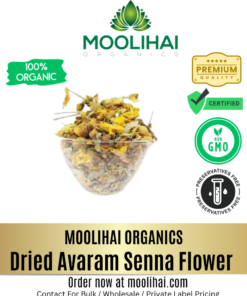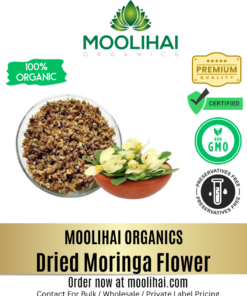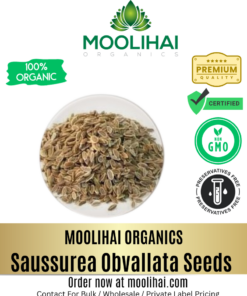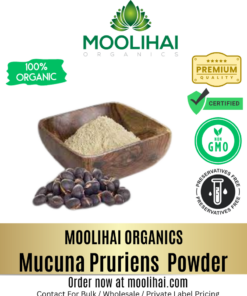Info
Benefits of Cypress Vine (Ipomoea Quamoclit / Mayil Manikkam)
Ipomoea Quamoclit is a flowering plant belonging to the largest botanical species called Ipomoea. It is an evergreen plant native to the tropics of the New World.
New World is a general term that refers to the majority of regions of Earth’s Western Hemisphere (specifically the Americas). These slender plants can grow naturally in the tropics as a creeping plants, so they can easily grow on fences and other trees.
It is also popularly identified as “மயில் மாணிக்கம்” or “மயிர் மாணிக்கம்” in Tamil. This annual plant is also known as Cypress Vine, Cardinal Creeper, Star Glory, Hummingbird Vine, Cypress Vine, Morning Glory, Cardinal Vine.
Native from North-South America to northern Mexico, this perennial, herbaceous, twisted vine can grow up to 3-10 feet in height.
The fern-like leaves of the Cypress Vine plant are approximately 25–102 mm long, almost pinnate, with 9-19 lobes on each side and finally curled into thread-like parts.
The most attractive flowers that can be produced in Cypress Vine are about 1-2 inches long and 1 inch in diameter. The flowers are very small and star-shaped (trumpet-shaped) with five spots on the surface.
Cypress Vine flowers, often bloom in red, rarely bloom in crimson, pink, and white. It resembles the appearance of a hummingbird and opening its petals in the morning. It is a perennial flowering plant that produces hundreds of flowers and thousands of seeds.
Common Names of Cypress Vine
- Botanical Name: Ipomoea quamoclit
- Tamil Name: மயில் மாணிக்கம் / Mayilmannikkam
- English Name: Cypress Vine, Red cypress vine, star glory
- Hindi Name: कामलता / Kamlata
- Malayalam Name: ആകാശമുല്ല / akasamullu
Facts About Cypress Vine / Ipomoea Quamoclit / Mayilmanikkam

- According to Ayurveda, Cypress Vine plants are used to treat various ailments and are also an important ingredient in the preparation of some medicinal products.
- However, they are widely grown throughout the tropics as an ornamental plant for their attractive flowers and exotic leaves.
- This ornamental plant grows as an annual plant that thrives only in tropical and subtropical regions.
- In non-tropical areas, these are grown as seasonal plants.
- Generally, fine seeds obtained from cypress vine, produces more flowers in the summer and autumn, are sown in the rainy season.
- They produce flowers from August to December in temperate regions of the southern hemisphere. At the same time, it blooms from February to June in temperate regions of the Northern Hemisphere.
- This type of plant species mostly prefers moist terrain, so if you want to grow this plant in your places first you should ensure that the terrain is moist at all times.
- Complete sunlight is essential for the quality and fertile growth of the Ipomoea Quamoclit plant.
- The color, smell, and character of this climbing vine can mostly attract hummingbirds.
- Cypress Vine plants that grow in tropical and hot climates do not require any fertilizer or individual care.
- Although it can be grown in small or large containers like other flowering plants, a certain amount of space is required between each.
- Ipomoea × multifida is a hybrid of Ipomoea quamoclit and Ipomoea hederifolia plants, which is known as a cardinal climber.
9 Clinically Proven Health Benefits of Cypress Vine

The leaves of Ipomoea Quamoclit plants have a very thin hair-like appearance thus they are called Mayir Manikkam (மயிர் மாணிக்கம்). But, in the course of time, these are widely known as Mayil Manikkam (மயில் மாணிக்கம்).
This is because the leaves look like peacock feathers and the flowers are referred to as red gemstones, hence the name peacock gem. Cypress Vine grows spontaneously in the mountains and forests of temperate zones and is currently on the list of endangered herbs.
Most people consider that these are only ornamental plants, but the leaves and roots of this plant have the ability to cure various ailments. This section reveals the important medicinal benefits of Cypress Vine.
1. Does Major Biological Functions
Cypress Vine Plants stimulate the most important and essential biological functions such as anticancer activity, antioxidant activity, antidiabetic activity, insecticidal activity, antimicrobial activity.
Because of such functions, and high resistance they encourage the use of a variety of therapies. Therefore, the perennial flowering plant called Cypress Vine has been used for many years around the world as a quality folk remedy for various ailments.
2. Effectively Treats Gonorrhoea
Gonorrhea (வெள்ளை வெட்டை), popularly known as ‘the clap’, is a sexually transmitted disease. If gonorrhea is not treated within the allotted time it can lead to infertility and other health diseases.
Although there are no symptoms in the early stages of the infection, they can cause a variety of health problems, including painful urination and abnormal discharge from the penis or vagina as they develop.
Antibodies naturally present in the body can inhibit their growth, but in today’s fast-paced world we have very limited immunity. That’s why it’s recommended to utilize the traditional medicinal herb Cypress Vine to boost the body’s resistance. Gonorrhea, which affects both men and women, can cause testicular pain in men and lower abdominal pain in women.
Take a handful of the hairy leaves of the Cypress Vine plant and add pepper to them and grind well. This mixture should be rolled into small gooseberry size balls.
Gonorrhea will heal quickly if you take this medication at the rate of once a day for 7 consecutive days. And this will also treat the side effects of Gonorrhea.
3. Manages Leucorrhoea (White Discharge)
Leukorrhea is a white or yellowish discharge that comes out of a woman’s vagina. Various external causes and some physical changes are responsible for the occurrence of leukorrhea.
This condition can be caused by the infections of yeast, bacteria, and other microorganisms and can lead to abnormalities. Besides, sexually transmitted diseases like chlamydia, gonorrhea, etc. are also the most important factors for leukorrhea.
Furthermore, vaginal infections, estrogen imbalances can increase the amount of discharge, which can have many adverse effects. Sometimes the discharge appears to be stagnant, but at certain intervals, they reappear.
Cypress Vine is the best remedy for this disease in women. Take 10 gms of Cypress Vine root and boil it well in 100 ml of water. Once the contents have reached the boiling point, drain all the water.
Leucorrhoea, Gonorrhoea, Chlamydia, etc. can be controlled by drinking this filtered water at the rate of 2 ounces daily.
4. Helps to Cure Hair Related Problems
A variety of factors contribute to hair problems, including malnutrition, use of water mixed with chemicals, poor maintenance, environmental pollution, stress, and depression due to workload.
This results in various hair and scalp problems such as hair loss, the fade of the hair color, dullness of the hair, dandruff, lice infestation, white patches, baldness, premature graying.
Various studies have proven that only natural herbs can provide the best solution to hair problems. That’s why all hair products made by many companies are based on natural ingredients. Although they also have some side effects due to the mixing of chemicals in them for processing.
An herbal plant called Ipomoea Quamoclit is famous for treating hair problems. Take a handful of each leaves such as Bhringraj leaf, Hibiscus leaf, Curry leaf, Henna leaf, Cypress root, and cleans well. Then pour oil that you normally use for hair into a bowl and heat it over medium flame.
Then heat all the above-mentioned herbs in this oil. Once the herbal extract is mixed in the oil, then strain it. Applying this mixture daily on the scalp can treat all hair problems including dandruff, hair fall, hair color.
Read also: Natural Herbs for Hair Growth and Thickness.
5. Alleviates Tumor
A tumor is an abnormal growth of tissue that appears in a specific area of the body, which can have different effects even if it resembles inflammation in appearance.
Cancerous tumors that form inside of the body can be malignant and pose a great risk, but tumors that form outside of the body can be less malignant and easily treatable.
Although not all tumors that develop in the body are cancerous, they can have unimaginable consequences if left untreated for long periods of time.
Cypress Vine plants also play a major role in the treatment of tumors. The Cypress Vine powder is mixed with a little water and applied to the lumps to cure them quickly.
6. Cures Inflammation
Inflammation is the rapid process (resistance process) carried out by white blood cells to protect the body from external attacks, including bacteria and viruses. Although the development of inflammation plays a major role in protecting the body from various infections, chronic inflammation can have far-reaching consequences.
In short, the most common symptom of the wound is inflammation, which becomes swollen and painful. Recent studies have shown that Cypress Vine contains a significant amount of anti-inflammatory properties.
Therefore, the powder obtained by drying the leaves of Cypress vine well under the sun and then grinding it has an active effect on inflammation. Currently, dry Cypress Vine is also available in various herbal stores.
Put the dried leaves and water of the cypress vine in a blender and grind well. Once the mixture has come to a paste consistency apply it over the affected area.
Read also: Best Herbs and Spices for Inflammation.
7. Relieves Skin Problems
Cypress Vine treats all skin problems such as dermatitis, scabies, rashes, red patches, white patches, wrinkled skin, premature aging, and dull skin. Such skin problems can develop and spread over time, affecting others as well.
Cypress Vine is used to treat skin ailments by crushing the leaves of the plant and applying it to the affected areas. Although these can’t cause any side effects, the guidance of Ayurvedic doctors is very important.
Read also: Herbs for Skin Better Skin Health.
8. Treats Urinary Disorders
Decreased urinary output due to side effects of malignant drugs, urinary incontinence, excessive dehydration (causes such as vomiting, diarrhea, fever), urinary tract blockages.
Low urinary output called Oliguria causes the worst diseases, including an enlarged prostate. When less than 400 milliliters of urine is excreted from a person’s body, they are considered to be in a state of Oliguria.
People with this condition have about 13.5 ounces less urine in 24 hours. Less than 100 milliliters of urine per day is called urinary incontinence, which is clinically called Anuria.
Cypress Vine is very helpful in stimulating the production of urine and in passing the urine liberally. In addition, these plants are the best treatment for Bleeding piles, Hemorrhoids, Snakebites, Ulcers, Breast pain, Diabetes, Fever.
9. Treats Cancer
Cypress Vine is considered a traditional herb for treating cancer, diabetes, hemorrhoids, etc. due to its plant resistance properties. The results of the study show that the methanol extract extracted from these plants has a very high proliferative activity against cell lines.
In addition, hexane extracts, ethyl acetate extracts, and dichloromethane have the potential to counteract the proliferative activity of cancer cells to some extent.
A study of Cypress Vine leaf extract demonstrated that they contain significant amounts of flavonoids, phenol, steroids, and triterpenes.
Traditional Uses of Cypress Vine

- The soft & thin leaves of the Cypress Vine plant are widely used in the Philippines to treat hemorrhoidal bleeding.
- The crushed leaves of this plant are used to treat the condition involving the inner skin area called carbuncles (a group of pus-filled bumps).
- Vietnamese people called Sino-Annamites use tiny seeds of Ipomoea Quamoclit plant as a laxative.
- In addition, these seeds have mild aperient properties and are used as a laxative by the people of Queensland.
- Besides, the root of this plant, which has the property of breaking the nature of venom, is also used to treat poisonous snake bites.
- The powdered root of the Cypress Vine plant helps to reduce blood clots and the resulting pain.
- In Spain, the powdered root of the plant is used to treat severe breast pain, serious wounds, and ulcers.
- The extract derived from the root of this plant is high in antibiotic properties which trigger the wound healing process to swiftly heal the wounds.
- It is recommended to use Cypress Vine leaf paste to treat sore throat, cracks, throat pain, vocal disorders, and many throat related ailments.
- The roots of this plant are used to control persistent sneezing called sternutatory and to treat catarrhal inflammation called coryza.
- According to Siddha medicine, the decoction obtained by boiling the leaves and stems controls diabetes and fever.
- In Ayurveda, Cypress Vine leaves are used to keep the gravid uterus firm during pregnancy.


























I think It is not the economic importance. I want more information